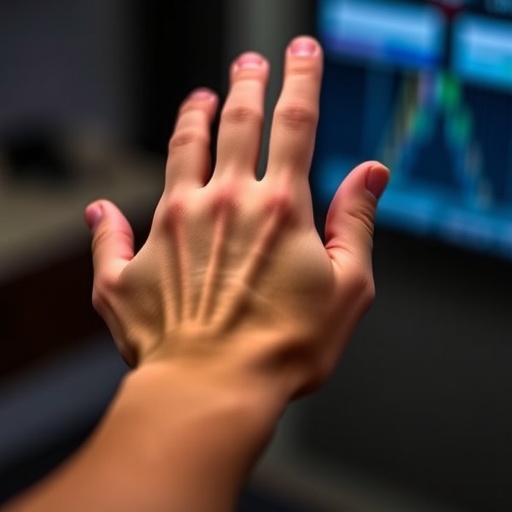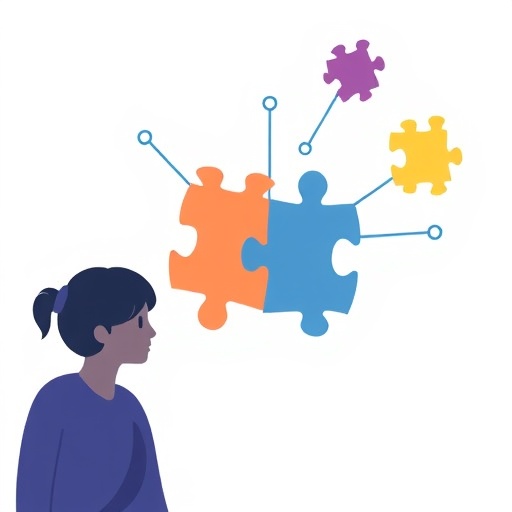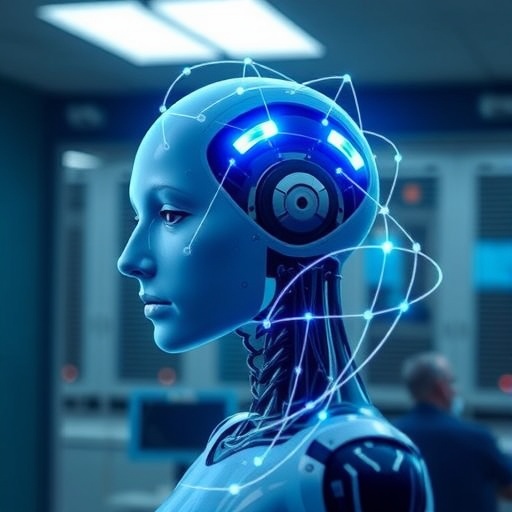
In a groundbreaking advancement in neurorehabilitation, researchers have unveiled a novel combined therapeutic approach that significantly enhances hand function recovery in early post-stroke patients. The study investigates the synergistic effects of contralateral controlled functional electrical stimulation (CCFES) and transcranial direct current stimulation (tDCS), two cutting-edge modalities that, when used together, outperform conventional treatments. This pioneering work illuminates new pathways for restoring motor function after stroke, offering hope for millions affected by debilitating hand dysfunction worldwide.
Stroke remains one of the leading causes of long-term disability globally, with hemiplegia and impaired hand movement profoundly impacting patients’ quality of life. Rehabilitation efforts have traditionally relied on physical therapy and standard care protocols, which often yield limited improvements during the critical early stages post-stroke. As neural plasticity is most receptive shortly after injury, intervening effectively during this window is crucial for maximizing functional recovery. This study addresses this clinical challenge by integrating two neurostimulation strategies aimed at enhancing cortical excitability and motor relearning.
The first technique, contralateral controlled functional electrical stimulation (CCFES), leverages the concept of bilateral motor control, wherein the unaffected hand’s activity directly governs electrical stimulation on the affected hand muscles. This innovative method facilitates active engagement and promotes symmetrical neural activation, potentially reinstating motor pathways disrupted by stroke. By entraining the paretic hand’s movements through the contralateral limb, CCFES addresses both peripheral muscle activation and central nervous system reorganization, offering a comprehensive rehabilitative stimulus.
.adsslot_6tDSx0FGUQ{width:728px !important;height:90px !important;}
@media(max-width:1199px){ .adsslot_6tDSx0FGUQ{width:468px !important;height:60px !important;}
}
@media(max-width:767px){ .adsslot_6tDSx0FGUQ{width:320px !important;height:50px !important;}
}
ADVERTISEMENT
Complementing CCFES, transcranial direct current stimulation (tDCS) provides a non-invasive means of modulating cortical excitability through low-intensity electrical currents applied across the scalp. tDCS has garnered considerable research interest due to its ability to enhance neuroplasticity, facilitating the relearning of motor skills and augmenting the effects of physical therapy. In post-stroke rehabilitation, tDCS can be targeted to upregulate activity in the affected motor cortex or to downregulate interhemispheric inhibition from the contralesional hemisphere, thereby restoring functional balance.
In this meticulously designed clinical trial, ninety patients diagnosed with early post-stroke hand dysfunction were randomly assigned into three groups: a control group receiving standard therapy, an experimental group receiving tDCS in addition to conventional treatment, and a second experimental group that combined both tDCS and CCFES alongside standard care. Such a stratified approach allowed the investigators to parse out the individual and combined efficacies of the neurostimulation techniques with robust scientific rigor.
Outcome assessments utilized a battery of validated clinical and electrophysiological measures to capture multifaceted improvements in motor function. The Fugl–Meyer Assessment for upper extremity (FMA–UE) provided objective evaluation of motor impairment severity, while the Functional Test for the Hemiplegic Upper Extremity–Hong Kong version (FTHUE–HK) and Modified Barthel Index (MBI) measured functional capabilities and activities of daily living. Further, Brunnstrom hand staging, the Motor Assessment Scale (MAS), and surface electromyography (sEMG) recordings yielded detailed insights into motor control restoration and muscular activation patterns.
Baseline evaluations confirmed homogeneity among the groups, reinforcing the internal validity of the trial. Post-treatment data revealed statistically significant improvements across all measures in the experimental cohorts compared to controls, underscoring the potent therapeutic benefit of neurostimulation. Notably, patients receiving only tDCS displayed marked gains over those undergoing traditional rehabilitation, confirming previous findings around the efficacy of cortical modulation.
However, the most remarkable outcomes emerged in the group receiving combined CCFES and tDCS. This cohort exhibited superior improvements in motor scores, functional independence, and electrophysiological markers beyond those receiving tDCS alone. The results suggest an additive or even synergistic interaction between peripheral electrical stimulation driven by the contralateral limb and central neuromodulation via tDCS, yielding more robust neural plasticity and motor recovery.
The mechanistic underpinnings likely involve enhanced sensorimotor integration and corticomuscular connectivity. CCFES activates afferent pathways from the stimulated muscles while simultaneously engaging the motor cortex through voluntary contralateral limb movements. Concurrently, tDCS modulates cortical excitability thresholds and facilitates synaptic efficacy, promoting the consolidation of motor relearning. Together, these approaches may recalibrate dysfunctional neural circuits resultant from stroke, accelerating restoration of volitional hand function.
Importantly, the combined therapy was well tolerated with no serious adverse effects reported, underscoring its feasibility for early rehabilitation protocols. This factor is critical when translating research into clinical practice, as safety and ease of administration determine patient adherence and accessibility. The non-invasive nature of both CCFES and tDCS further expands their applicability across diverse clinical settings.
These findings resonate strongly with contemporary neurorehabilitation paradigms emphasizing individualized, multimodal interventions targeting both central and peripheral nervous system components. By harnessing the brain’s plastic potential through targeted stimulation and active patient engagement, this dual-therapy model aligns with precision medicine approaches that tailor treatment to specific neural deficits and recovery windows.
While the study’s scope was confined to early post-stroke stages, future research could explore long-term functional outcomes, optimal dosing parameters, and integration with other rehabilitation technologies such as robotics or virtual reality. Moreover, deciphering the neurophysiological changes through advanced imaging and electrophysiological mapping could deepen understanding of the plasticity mechanisms elicited by combined neurostimulation.
In summary, this seminal research highlights a transformative step forward in post-stroke hand rehabilitation. The synergistic application of contralateral controlled functional electrical stimulation and transcranial direct current stimulation delivers superior therapeutic benefits beyond conventional and singular neurostimulation approaches. As stroke prevalence continues to rise globally, advancing effective, scalable therapies is imperative, and this combined modality stands poised to redefine standards of care for motor recovery.
The implications extend beyond stroke rehabilitation, suggesting potential utility in diverse neurological conditions marked by motor impairment. Harnessing bilateral motor control strategies in conjunction with cortical modulation may unlock new horizons in neuroplasticity-driven interventions. This study paves the way for a paradigm shift toward integrative, technology-enhanced recovery models that meaningfully improve patients’ quality of life.
Subject of Research: The clinical efficacy of combining contralateral controlled functional electrical stimulation (CCFES) with transcranial direct current stimulation (tDCS) in early post-stroke hand dysfunction rehabilitation.
Article Title: Combined therapy with contralateral controlled functional electrical stimulation and transcranial direct current stimulation for early post-stroke hand dysfunction.
Article References:
Liu, Z., Wang, L., Hou, M. et al. Combined therapy with contralateral controlled functional electrical stimulation and transcranial direct current stimulation for early post-stroke hand dysfunction. BioMed Eng OnLine 24, 81 (2025). https://doi.org/10.1186/s12938-025-01417-1
Image Credits: AI Generated
DOI: https://doi.org/10.1186/s12938-025-01417-1
Tags: contralateral controlled functional electrical stimulationdual stimulation therapyearly intervention in stroke recoveryenhancing cortical excitabilityhemiplegia rehabilitation techniquesimproving hand function after strokeinnovative stroke recovery methodsmotor function restoration after strokeneurorehabilitation advancementsneurostimulation strategies for rehabilitationpost-stroke hand recoverytranscranial direct current stimulation





